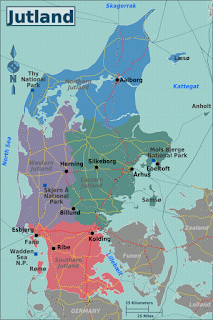Tartuffe is a play by Jean-Baptiste Poquelin, known by his stage name Molière. He is regarded as one of the greatest writers not only in the French language but also in world literature. The play Tartuffe was first performed in 1664.
Two important characters of the play are Orgon, the head of the house and Tartuffe, his houseguest. Other important characters are Elmire, Orgon's wife, Valère, a young man who is interested in Orgon's daughter Mariane, and Madame Pernelle, the mother of Orgon. Other characters are Damis, Tartuffe's son and Dorine, the family maid.
Orgon and his mother are deceived by Tartuffe, a hypocrite who does not fool the rest of the family. They are alarmed when Orgon announces that Tartuffe will marry Mariane, though she is already engaged to Valère. Mariane is very upset, but she realizes that Tartuffe has great influence over her father.
In an effort to show Orgon how bad Tartuffe really is, the family plans to trap Tartuffe into confessing his desire for Elmire. Since he claims to be a very pious man, Tartuffe should have no such feelings for Orgon's wife. The family hopes that after a confession, Orgon will evict him from the house.
Tartuffe tries to seduce Elmire, but their conversation is interrupted when Damis can no longer control his anger and jumps out of his hiding place to denounce Tartuffe. At first, Tartuffe is shocked. However, when Orgon enters the room and Damis tells his father what happened, Tartuffe acts innocent and accuses himself of being the worst sinner. Orgon is convinced that his son is lying and banishes him from the house.
Tartuffe has so much influence over Orgon that he even convinces him to teach his son a lesson. His suggestion is that Tartuffe should spend more time with Elmire than ever before. Orgon agrees and as a gift to Tartuffe, signs over to him all his possessions.
Determined to expose Tartuffe, Elmire asks Orgon to be a witness to a meeting between her and Tartuffe. Orgon agrees and decides to hide under a table in the room, confident that his wife is wrong. He overhears his wife resisting Tartuffe's advances. Having heard enough, Orgon comes out from under the table and orders Tartuffe out of the house. However, Tartuffe does not intend to leave.
Tartuffe reveals that he has in his hand a box of incriminating letters written by Orgon's friend. Orgon now regrets his decision to tell Tartuffe about the letters. Tartuffe now tells Orgon that he (Orgon) must leave. Tartuffe then leaves but only temporarily.
Orgon's family tries to reach a decision. An official arrives with a message from Tartuffe and the court. The family must leave the house because it now belongs to Tartuffe. Even Madame Pernelle, who up to this point has refused to believe that Tartuffe is not who he claims to be, is convinced of his deception.
As soon as the official leaves, Valère arrives with the news that Tartuffe has denounced Orgon for assisting a traitor by keeping the incriminating letters and will soon be arrested. Before Orgon can escape, Tartuffe enters with an officer, but to Tartuffe's surprise, the officer arrests Tartuffe instead. The officer explains that the king has heard of the injustices committed in the house and ordered Tartuffe's arrest. It is revealed that Tartuffe has a long criminal history and has often changed his name to avoid arrest. As a reward for Orgon's good services, the king forgives Orgon for keeping the letters and reverses the deed that gave Tartuffe the house and possessions. Orgon then announces the future wedding of Valère and Mariane.
In the play Tartuffe, the traitor is Tartuffe and not Orgon. The main theme of the play is hypocrisy. Tartuffe is nothing like the man he claims to be because he does not practise what he preaches. Through the play, Molière illustrates that appearances can be deceiving.








